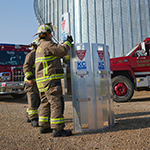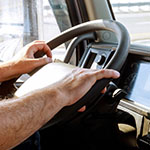Private passenger driver safety programs
Learn how driver safety programs can help protect some of your most valuable assets: your employees.
With gas prices now hitting unexpectedly low marks, more people than ever are hitting the road in their own personal vehicles. Just because your day-to-day car or truck doesn’t need to pass the stringent codes and regulations of a commercial vehicle, doesn’t mean you don’t have precious cargo of your own to transport. In today’s world, motor vehicle accidents are a major leading cause of death and serious injury. Whether they occur on or off the job, they can have financial and psychological effects on your company, your employees and their families.
Driver safety programs are an important point of participation for any company because they help prevent the unforeseen and unfortunate. Take some time to review the following and learn why driver safety programs can help protect some of your most valuable assets; your employees.
Reasons for a driver safety program
- To save employee lives and to reduce the risk of life-altering injuries within your workforce.
- Protect your organization’s human and financial resources.
- Good for employee relations; prove that you care about employees’ wellbeing.
- Guard against potential company and personal liabilities associated with crashes involving employees driving on company business.
Vehicle accidents and injuries are costly
According to a study by OSHA and the NHTSA, motor vehicle crashes cost employers $60 billion annually in medical care, legal expenses, property damage, and lost productivity.
The average vehicle accident cost an employer $16,500. When an injury is involved, the cost jumps to $74,000. Fatal accidents can easily reach $500,000 or more, and these numbers are several years old. Cost in today’s dollars will be higher.
An off the job accident and injury can cost employers as well. When an employee can’t come to work, it cost you money.
Whatever your business, whether large or small, you are in that business. You are not in the business of handling vehicle accidents and injuries. When you are put in the position of having to deal with these accidents and injuries, it takes time, money and resources away from running your business.
For every dollar spent on an accident, there are additional dollars spent on indirect cost. It’s important to remember that insurance does not cover everything. As the following diagram illustrates, the costs which insurance will cover is often just the tip of the iceberg.
These ten steps can help develop and implement a comprehensive Motor Vehicle Safety Program.
1. Senior management commitment and employee involvement
It starts at the top. Programs without top level involvement are doomed to fail.
2. Written policies and procedures
If it is not written down, it may not happen. Having a written policy and procedures program and making it available to everyone, does not leave room for doubt or different interpretations.
3. Driver agreements
It is essential that drivers of company vehicles or personal vehicles on company business, understand what is expected of them. By providing and having drivers sign the agreement, it insures everyone understands the rules.
4. Motor Vehicle Record (MVR) checks
Screening drivers on a regular basis will help you keep track of what is happening with your drivers. Once a driver leaves your property, you are relying on them to drive safely. They are now in an area where you very little control. MVR’s are one way of having some control.
5. Accident reporting and investigation
Determining the root cause of an accident is important in preventing others. If you do not know the cause, you cannot take steps to prevent additional accidents of the same nature.
6. Vehicle selection, maintenance and inspection
A good preventative maintenance schedule can prevent not only breakdowns but accidents as well. How many accidents could have been prevented if a vehicle had been in good mechanical condition.
7. Disciplinary action system
There must be consequences for one’s actions. Drivers need to know what to expect when their driving behavior violated company or regulatory policy.
8. Reward/incentive program
Everyone likes to be recognized for doing a good job. An incentive program for safe driving and working can accomplish this.
9. Driver training/communication
Communication is critical in any business. Lack of communication leads to problems for any business. Training is a good way to communicate. When you have good training programs and communicate on a regular basis, you won’t hear “I didn’t know” or “nobody told me”.
10. Regulatory compliance
Some drivers (commercial vehicles) will be under more regulations than other drivers. Experience has shown that companies and drivers that comply with company, local, state and federal regulations are less likely to be involved in an accident. When you think about it, regulations that were enacted for motorist, were done so to prevent accidents.
Nationwide developed a Safe Driver Program that works
Nationwide, one of the largest insurance and financial services companies in the United States, operates a large, private motor vehicle fleet.
While the number of miles driven by Nationwide associates has increased by 19 percent, the organization’s preventable crashes have decreased by 53 percent.
The organization’s total motor vehicle loss costs are down 40 percent.

 >
>

 >
>
 >
>